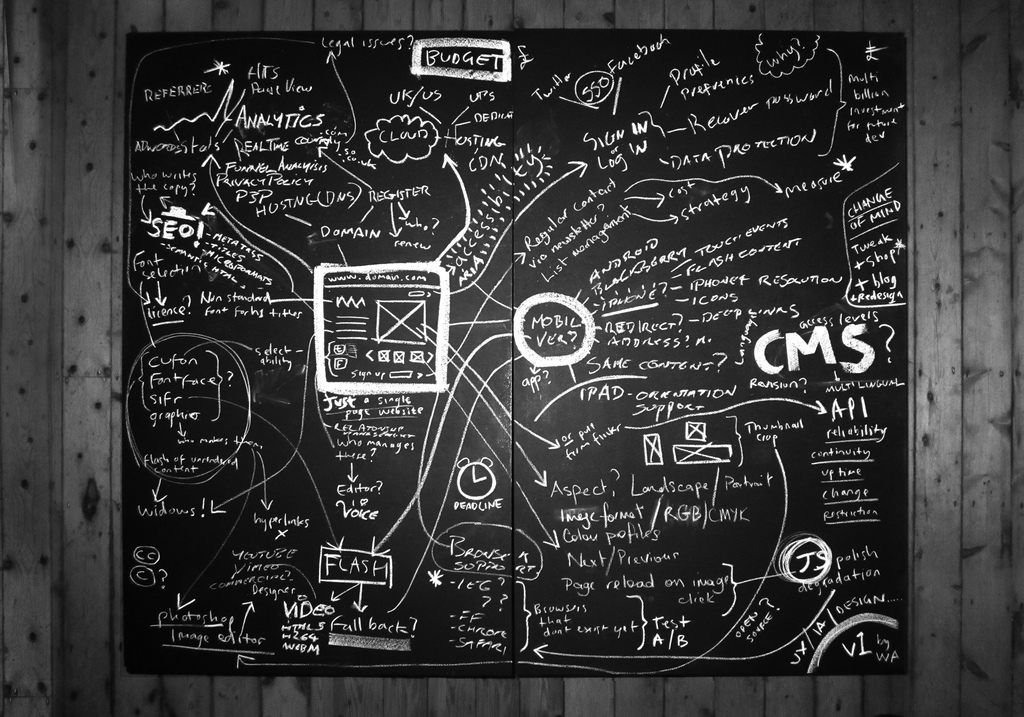Britain has a reputation for being a nation of queuers. It is said that if we see a queue we join it. There are no reliable statistics, but estimates suggest we spend between 6 months and 4 years of our lives waiting in line. All of us have felt the pain and frustration of queuing. The psychology and economics of queuing have spawned whole strands of academic study. Managing queues can define success or failure. This article looks at the psychology of queuing and tactics for improving them.
Good Queues vs Bad Queues
With every iPhone release we are guaranteed coverage of Apple fan-boys and girls camped outside the store, just to be the first to get their hands on a phone slightly different from the one they currently have. Every summer, people queue for a chance to watch people hit a ball over a net at Wimbledon. The cameras pan up and down and say how jolly they all are and how there’s a real ‘community-spirit’. These people are there for days; and loving it!
On the other hand, people lose their minds having to wait two extra seconds when the traffic lights change.
There has been a great deal of academic research into the theory of managing queues – for example, how adding extra servers affects average waiting times, ways of speeding up serving times and even how to design a queue (more on that later).
But beyond the maths however, is the fact that queues are experienced by real-life people. And real people feel things and think things that sometimes don’t correlate to absolutes.
The Psychology of the Queue
The psychology of queuing is rather unsurprising: 1) We get bored when we wait in line. 2) We really hate it when we expect a short wait and then get a long one. 3) We hate it when someone shows up after us but gets served before us.
The point is, reality is not important – it is the perception and the expectation that define whether people are satisfied or not with their queuing experiences.
Sasser (et al) offer the example of:
‘the well-known hotel group that received complaints from guests about excessive waiting times for elevators. After an analysis of how elevator service might be improved, it was suggested that mirrors be installed near where guests waited for elevators. The natural tendency of people to check their personal appearance substantially reduced complaints, although the actual wait for the elevators was unchanged.
– Sasser, W.E., J. Olsen, and D.D. Wyckoff (1979), Management of Service Operations: Text, Cases and Readings. New York: Allyn and Bacon.
Occupied Time Feels Shorter Than Unoccupied Time
A NY times article cites an example from Houston airport. They had an inordinate number of complaints about the long waits at baggage claim. Their first response was to increase the number of baggage handlers – reducing the time bags took to travel from plane to carousel to under 8 minutes (well below industry standards). Complaints dipped slightly but still continued to pour in. On looking at the experience closer, they realised that it took passengers a minute to walk from their arrival gates to baggage claim and seven more minutes to get their bags. So they took another approach – they moved the arrivals gate. Passengers now had to walk six times longer to get their bags. Complaints dropped to nearly zero.
Many restaurants hand out menus for customers waiting in line. Apart from shortening the perception of time, this practice has the added benefit of shortening the service time, since customers will be ready to order once they are seated. Giving out menus or seeing a nurse as soon as you enter Accident & Emergency make you think the service has started.
Fairness
Fairness is hugely important to the queuer. During a recent London tube strike I inadvertently broke queue etiquette. It seems that the special circumstances of the strike had changed the situation. Normally, positioning yourself around a doorway then shuffling your way on is standard practice – but lost in thought (ironically, about this article) I failed to recognise a self-organised queue and more importantly, the rules associated with it. Interestingly, the trains were no more busy than usual but the mere threat of change had altered the mechanics – leaving me on the other end of a public telling off.
Getting a Head Start
In 2011 Instagram co-founder Mike Krieger said the trick to Instagram’s snappiness is what he called “moving bits in the background.” Essentially, actions are completed before the app’s design visually notifies the user. With the case of uploading photos, Instagram sends the images to its servers before you expect it to (i.e. while you’re filling out the caption text, etc.).

Clearly this idea of starting the service whilst in line could apply to so many areas. For example – ordering your drinks before you get to the bar or scanning your shopping as it gets put into your basket. When Starbuck’s asks for your order and takes your name in the queue it achieves several things. They have created a personal connection, started the service earlier than expected and made the production process more efficient.
Make the Queue an Experience in Itself
Disney is well-documented as being leaders in turning the queue into an integral part of the experience. After all – how do you get people to wait two hours for a ride that lasts less than five minutes (and pay money for the privilege)?
My favourite document of Disney’s history and approach to the queue comes from the Passport 2 Dreams blog – written by a very committed Disney enthusiast.
“Disney’s main innovation and departure in 1955 was to replace the traditional “back wall” with, in fact, no wall and a beautifully designed manufactured landscape. Trompe l’oeil becomes terrain, the “scenic switchback”. The earliest example of this may be the Jungle Cruise, but I think the most beautiful one is the Matterhorn Bobsleds, which is an exciting, fascinating wait in line by virtue of… yodeling music and manufactured rocks.”
But for all that, honestly, we don’t think of Disney’s best queues as being plain switchbacks, even if they secretly are. If we cut the roof off the Florida Pirates of the Caribbean queue and look in, we’ll see that the switchbacks are unpredictable because they wrap behind walls and around scenes, they’re actually pretty much just like what still graces the front of Snow White’s Scary Adventures (see below). Even the beautifully linear Space Mountain and Indiana Jones Adventure queues eventually reach switchback areas, just not immediately or obviously. These queues, the “secret switchbacks”, are a later innovation on the part of Disney and are what is generally thought of as the “themed queue”, atmospheric treks which set up some component of place or atmosphere, indicators of an advanced state of themed design.”
Alton Towers, the UK’s largest theme park, is also making strides to occupy us in the queue. One of their newest ride’s, ‘The Smiler’, has its own augmented reality app that offers up easter egg rewards for those in the queue (Editors note: The following was written prior to the infamous crash). The park also has an app that tells you how long the queues are for each ride (always overestimated of course to make sure they can beat expectations!).
It seems that the phone offers perhaps the best opportunity to satisfy the queuer. It already does it to a certain extent. People will be checking messages, playing games or reading the news as they stand there. The problem with this is that it is a lost opportunity for extending the customer experience. They are in another space. A space where you probably aren’t (unless they’re insulting you on Twitter). You can’t stop people from occupying themselves, but if you create a compelling offer that ideally ties into the service they are queuing for – you have the opportunity to make it a better experience and potentially a more efficient business operation.
Reducing Anxiety
Stress from queuing is due to a number of causes – but one of the biggest contributors is the perception of fairness. The premise is that no one is more important than anyone else, and everyone should be served in the order he or she arrived. The simplest way of achieving this is to create a serpentine line / switchback queue. You go in one end and when it’s your turn you see an available server. It is possibly not the most efficient way in terms of time – but it reduces the anxiety, i.e. I’m here now so I can relax. Flying with a budget airline can really highlight the stress and anxiety of queueing, fairness and group dynamics. So much so, they have now commoditised a ‘fix’ to the issue by letting you buy a pre-booked seat – a service that used to be a given.

Ingenious self-organised queuing strategy in Thailand
Disruption
It’s obvious that things we once queued for are being disrupted by technology. Buying your cinema tickets online and showing a QR code on the door is becoming commonplace. Ordering your shopping online and getting it delivered to your door is now mainstream.
It seems that even the British are changing. A report published by mobile phone operator Three said “British people are now prepared to wait in line for no more than four minutes”. So wake up Post Office, wake up banks, wake up airports – let’s make those queues better.
For further reading, you can find a list of resources here.




